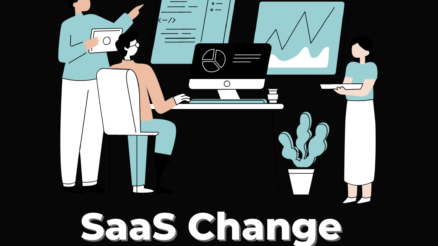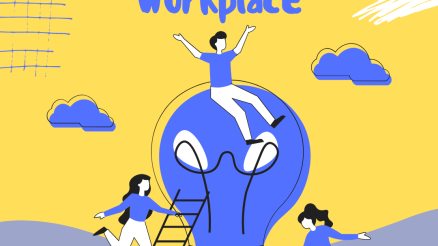Artificial Intelligence (AI) is reshaping the very fabric of our professional lives.
From automating mundane tasks to influencing high-stakes decision-making, AI has become an omnipresent force in the contemporary workplace.
According to an Accenture Analysis almost 73% of organizations across the globe are prioritising AI over any other investment to improve their efficency and operational resilience.
As we stand at the cusp of a new era where technology and human endeavors intertwine, it’s essential to think and reflect on the future of artificial intelligence in the workplace.
In this blog post, we will explain what’s the current state of AI in our professional lives, what are challenges associated with AI and what are trends that are shaping the future of artificial intelligence in the workplace.
Let’s dive in and learn about this exciting topic.
What is Artificial Intelligence?
Artificial Intelligence (AI) refers to the simulation of human intelligence in machines that are programmed to think and learn like humans.
It involves the development of algorithms and computational models that enable machines to perform tasks that typically require human intelligence.
These tasks include problem-solving, learning from experience, understanding natural language, recognizing patterns, and making decisions.
AI can be categorized into two main types: Narrow AI (also known as Weak AI) and General AI (also known as Strong AI).
Narrow AI is designed to perform a specific task or a set of tasks, while General AI aims to possess the ability to understand, learn, and apply intelligence across a wide range of tasks, similar to human intelligence.
The field of AI encompasses various sub-disciplines, such as machine learning, natural language processing, computer vision, and robotics.
Machine learning, in particular, plays a crucial role in AI by enabling systems to improve their performance on a specific task over time through learning from data without being explicitly programmed.
AI has applications across diverse industries, including healthcare, finance, education, manufacturing, and more.
As AI technologies continue to advance, their impact on society and the workplace is evolving, raising questions about ethical considerations, societal implications, and the future of artificial intelligence in the workplace.
The Evolution of Artificial Intelligence in the workplace
In the late 20th century, the groundwork for AI in industries was laid with the development of expert systems and rule-based programs.
These early AI applications were designed to replicate human decision-making in specific domains.
Though limited in scope, they paved the way for the exploration of AI’s potential in addressing complex problems and automating tasks.
The turn of the millennium saw a significant shift with the advent of machine learning.
This marked the beginning of AI systems capable of learning from data without explicit programming. Industries started leveraging machine learning algorithms for data analysis, predictive modeling, and classification tasks.
This era laid the foundation for more adaptive and intelligent AI applications in the workplace.
As data became increasingly abundant, businesses recognized the potential of AI in unlocking actionable insights.
Big data analytics and AI became intertwined, allowing companies to process vast datasets and extract meaningful patterns.
Industries such as finance, healthcare, and retail began using AI to optimize operations, enhance customer experiences, and inform strategic decisions.
The mid-2010s witnessed the rise of natural language processing (NLP) and conversational AI.
Chatbots and virtual assistants, powered by sophisticated NLP algorithms, entered customer service and internal operations.
This not only streamlined communication but also improved user experiences and response times. The workplace started to see the integration of AI-driven assistants capable of understanding and responding to human language.
Automation took center stage with the introduction of robotic process automation (RPA).
Industries sought to enhance operational efficiency by deploying software robots to perform rule-based tasks.
RPA not only reduced errors but also allowed human workers to focus on more complex and creative aspects of their jobs. The manufacturing sector, in particular, embraced automation with AI-driven robotic systems.
The collaborative era of AI emerged, emphasizing human-AI partnerships. Rather than replacing human workers, AI systems were designed to complement human skills.
In healthcare, AI aided medical professionals in diagnostics, while in creative industries, AI tools assisted in design and content creation. This collaborative approach fostered innovation and efficiency across various sectors.
The integration of AI in talent management and recruitment added a new dimension to workplace dynamics.
AI-powered tools, from resume screening to candidate matching, streamlined hiring processes.
Predictive analytics became instrumental in identifying high-potential candidates and forecasting employee retention risks, leading to more strategic workforce planning.
Challenges and concerns in the current landscape
While Artificial Intelligence (AI) brings about numerous benefits in the workplace, its adoption also poses various challenges and concerns.
It’s crucial to address these issues to ensure responsible and ethical use of AI technologies.
Here are some key challenges and concerns in the current AI landscape:
Job Displacement:
Automation of certain tasks through AI technologies may lead to job displacement, especially in industries where routine and repetitive tasks are prevalent. This raises concerns about unemployment and the need for reskilling the workforce.
Ethical Considerations and Bias:
AI systems may unintentionally perpetuate or even exacerbate existing biases present in training data. Ethical concerns arise when AI algorithms make decisions that may discriminate against certain groups, potentially leading to unfair treatment.
Privacy and Data Security:
The extensive collection and analysis of data by AI systems raise privacy concerns. Ensuring the security of sensitive information and preventing unauthorized access to personal data are critical challenges in the AI landscape.
Lack of Transparency:
Many AI algorithms operate as “black boxes,” making it challenging to understand how they arrive at specific decisions. Lack of transparency can hinder trust and make it difficult to address biases or errors.
Regulatory and Legal Challenges:
The rapid evolution of AI technology often outpaces the development of regulations and laws. This creates challenges in establishing clear guidelines for ethical AI use, data protection, and liability in case of AI-related incidents.
Overreliance on AI:
Excessive reliance on AI systems without human oversight can lead to complacency and potential errors. Human intervention is crucial for interpreting complex situations and making nuanced decisions.
Complexity and Integration Issues:
Integrating AI systems into existing workflows can be complex and may require significant adjustments. Compatibility issues, training requirements, and the need for technical expertise pose challenges during implementation.
AI in Cybersecurity:
While AI can enhance cybersecurity, it also introduces new risks. Adversarial attacks, where malicious actors manipulate AI algorithms, pose a threat. Ensuring the security of AI systems themselves becomes a critical concern.
Social and Economic Inequality:
The benefits of AI may not be distributed equally, leading to increased social and economic inequality. Access to AI technologies, job opportunities, and the ability to adapt to technological changes can vary across different demographics.
Responsible AI Development:
Ensuring responsible and ethical AI development practices, including the consideration of long-term societal impacts, is a challenge. Developers must actively work to embed ethical principles into AI systems.
Unintended Consequences:
AI systems may produce unintended consequences that were not anticipated during their development. Understanding and mitigating these unintended outcomes are ongoing challenges.
Top 6 Trends Shaping the Future of AI in the Workplace
AI is rapidly evolving in the workplace. Having understanding of the future trends of artificial intelligence in the workplace allows individuals and organizations to anticipate and prepare for these changes.
This proactive approach helps in staying ahead of the curve and leveraging AI advancements for improved productivity and efficiency.
Here are some top trends that shape the future of AI in the workplace.
1. Advanced Automation and Robotics:
One significant trend shaping the future of AI in the workplace is the continued advancement of automation and robotics.
AI-powered robotic systems are increasingly taking on routine, repetitive, and physically demanding tasks, freeing up human workers for more complex and creative roles.
For instance, in manufacturing, robotic arms equipped with AI vision systems can precisely assemble products, increasing efficiency and accuracy.
In warehouses, autonomous robots powered by AI algorithms are being used for tasks like inventory management and order fulfillment, improving overall operational speed and reducing labor-intensive efforts.
This trend signifies a shift towards a more automated and streamlined workforce, where humans collaborate with intelligent machines to maximize productivity.
2. Machine Learning and Predictive Analytics:
Machine learning and predictive analytics are playing a pivotal role in shaping the future of AI in the workplace.
Organizations are harnessing the power of machine learning algorithms to analyze vast datasets and derive actionable insights.
For example, in customer service, machine learning models can predict customer needs and preferences based on historical data, enabling businesses to offer personalized and proactive support.
Predictive analytics is also being utilized in workforce management, where algorithms forecast employee turnover, helping companies take preventive measures to retain valuable talent.
This trend underscores the transformative potential of AI in making data-driven decisions and enhancing overall organizational efficiency.
3. Collaborative AI and Human-Machine Partnerships:
The future workplace is witnessing an increasing trend of collaborative AI, where intelligent systems work in tandem with human employees.
In healthcare, for instance, AI-powered diagnostic tools assist medical professionals in analyzing medical images and identifying potential issues, leading to more accurate diagnoses.
In business, collaborative AI systems help with tasks like brainstorming, offering insights, and facilitating decision-making processes during meetings.
The aim is to create synergies between human creativity, intuition, and critical thinking, combined with AI’s analytical capabilities.
This trend reflects a shift towards a harmonious coexistence of humans and intelligent machines, leveraging the strengths of both.
4. Personalization of User Experiences:
Another significant trend is the increasing emphasis on personalization of user experiences through AI.
In the workplace, this trend manifests in various forms, such as personalized learning paths for employee training and development.
AI algorithms analyze individual performance data to recommend tailored learning modules, ensuring that employees acquire skills relevant to their roles.
Similarly, in customer-facing applications, AI-driven personalization enhances user interactions by offering customized recommendations or content.
This trend not only improves user satisfaction but also contributes to higher engagement and productivity within the workforce.
5. Ethical Considerations and Responsible AI:
As AI continues to evolve, there is a growing awareness of the importance of ethical considerations and responsible AI practices in the workplace.
Organizations are recognizing the need to address biases in AI algorithms, ensuring fairness and inclusivity.
For example, in recruitment, AI tools are being scrutinized for potential bias in hiring decisions, and efforts are made to develop algorithms that treat all candidates fairly.
Additionally, there is a push for transparency in AI decision-making processes, allowing users to understand how and why certain conclusions are reached.
This trend reflects a broader societal commitment to ensuring that AI technologies are developed and deployed ethically, with a focus on minimizing negative impacts on individuals and communities.
6. More AI Jobs Creation in the Future
While there are concerns about job displacement due to automation, historical evidence and ongoing trends suggest that AI can also generate new employment opportunities.
The rapid growth of AI necessitates a workforce with specialized skills in machine learning, data science, and AI development. This leads to increased demand for professionals in these fields, creating new job opportunities.
According to an article published by the World Economics Forum, the demand for AI-linked roles, including data scientists, big data specialists, and business intelligence analysts, is projected to grow significantly, with an estimated increase of 30 to 35%.
The automotive and aerospace industry leads in expected employment gains, with 73% of companies anticipating positive outcomes.
Other sectors, such as research and design, business management services, information and technology services, and electronics, also foresee substantial employment growth in response to AI adoption.
Final Words
The future of Artificial Intelligence in the workplace holds exciting possibilities but also comes with important responsibilities. As we move forward, AI will continue to automate tasks, enhance collaboration between humans and machines, and personalize our work experiences. However, we must be mindful of challenges like job displacement, biases, and the need for ethical AI practices. Striking a balance between embracing AI’s potential and ensuring it benefits everyone requires collaboration, transparent practices, and a commitment to responsible development. By navigating these challenges thoughtfully, we can shape a future where AI in the workplace enhances productivity, fosters innovation, and contributes to a more inclusive and equitable working environment.



